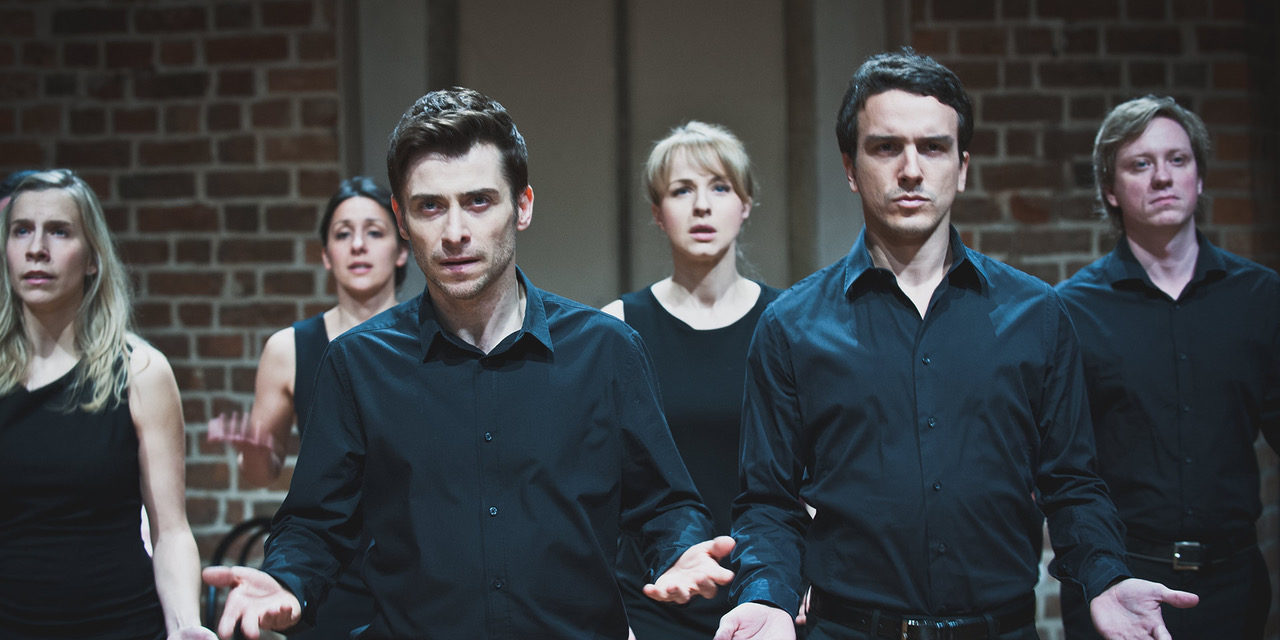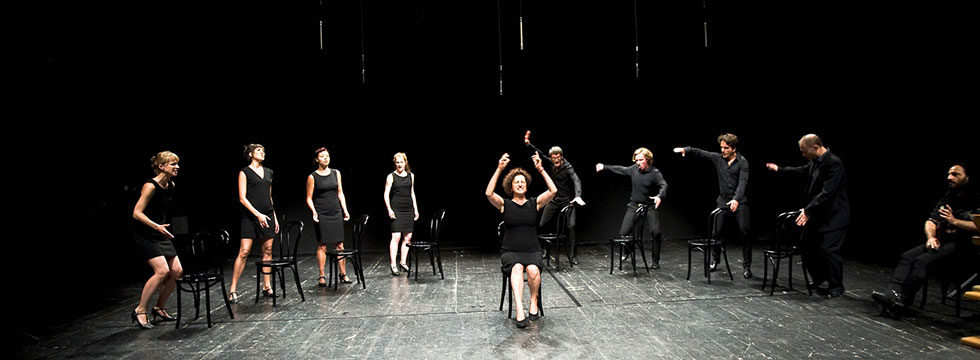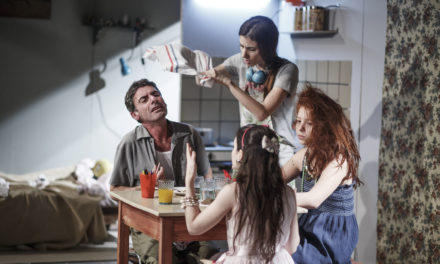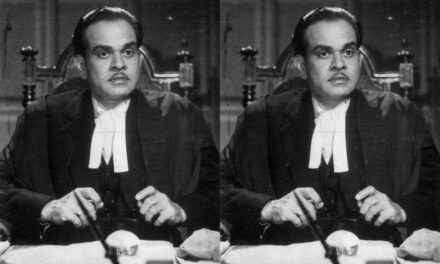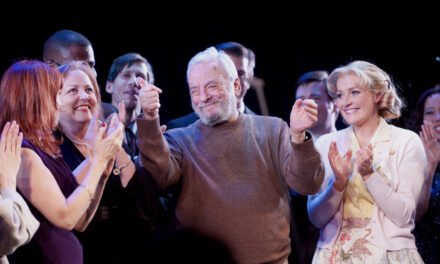Devising their works in a 13th-century refractory and former monastery in Wrocław’s Old Town, Song of the Goat Theatre (Teatr Pieśń Kozła), co-founded in 1996 by Grzegorz Bral and Anna Zubrzycka, outspokenly searches Nietzsche’s vision of resurrecting tragedy though the spirit of music. The company has produced a wide range of ‘musical adaptations,’ including old myths (Chronicles: A Lamentation, 2001; Lacriminosa, 2005), Shakespeare (Macbeth, 2008; Songs of Lear, 2012), and Chekhov (Portraits of The Cherry Orchard, 2013). They have also produced concert-like performances including Return to the Voice (2014), which is based on traditional Scottish music. Furthermore, Song of the Goat is deeply rooted in the Polish theatre tradition in terms of its richly developed musicality, employed in both the company’s work and its pedagogy.
Song of the Goat follows the sonic trend in avant-garde theatre that aims to challenge the traditional understanding of theatre, which is originally derived from theatron—a place to watch. It is a new drive based not on astounding visual revolutions but on sonorous waves that celebrate polyphonous voices. It is evident in Songs of Lear, which played a short run at BAM, whose Corsican polyphonic music is composed beautifully by Jean-Claude Acquaviva.
Mr. Bral opens the show by telling a personal story of his inspiration. Then he establishes the structure of Songs of Lear, which is composed of a series of non-linear ‘paintings’. He then introduces the actors on the stage, and, in somewhat the fashion of Kantor (a legendary Polish director who often appeared on the stage himself), Mr. Bral becomes a conductor temporarily and tunes up the actors into harmony. This is particularly satisfying to watch/hear. The collectivity of the ensemble is shown through their impeccable tuning, and audiences are intrigued to see / listen to what happens next.
Each ‘painting’ is a song. Sometimes it is accompanied by physical movements and live instruments, sometimes it is simply pure a cappella without any theatrical ornaments. Here, the protagonist turns out to be Cordelia. Played by almost every female actress in the show, she sings some heartbreaking laments spanning from her childhood to adulthood. Those intense Cordelia paintings reveal some directorial interpretations, including Lear’s physical, if not sexual, abuse throughout her lifetime. The musicalized physicality of the ensemble makes the songs travel even further into our souls.
Song of the Goat achieves an incredible feat by immersing themselves in the old, aboriginal music largely unknown to urban audiences, excavating the spirit from antiquity and creating their own dithyramb. This anthropological methodology prevents their musical compositions from becoming ‘popular’, since “traditional songs became popular when they lost spirit,” says Mr. Bral. Maintaining a certain level of the (quasi‑)ceremonial and ritual sense that permeated the original theatre practice, Song of the Goat finds a contemporary bridge to the ancient that is accessible to modern audiences.
There is always a choral background to support or combat the main singer of the painting in Songs of Lear. Even though the language is mostly in Polish and Latin, the power of choral singing becomes the most prominent aspect of the show, transcending the language barriers between the auditorium and the stage. The vibration of the ensemble’s voices captures the despair of Cordelia. No additional words need to be said. Mr. Bral delivers a short explanatory intro before each song, helping the audience understand the foundation for the mystifying paintings they are about to experience. The explanations help provide clarity, but they also restrict somewhat the free realm of interpretation that the music creates.
After the final painting, with the last notes still hovering above the audience, Mr. Bral comes onto the stage and simply says, “That’s it”. The audiences’ bodies are left saturated with the lamenting music. Shakespeare does not speak much in this production, but his musicality is definitely worth listening to.
This post was written by the author in their personal capacity.The opinions expressed in this article are the author’s own and do not reflect the view of The Theatre Times, their staff or collaborators.
This post was written by Kai-Chieh Tu.
The views expressed here belong to the author and do not necessarily reflect our views and opinions.

